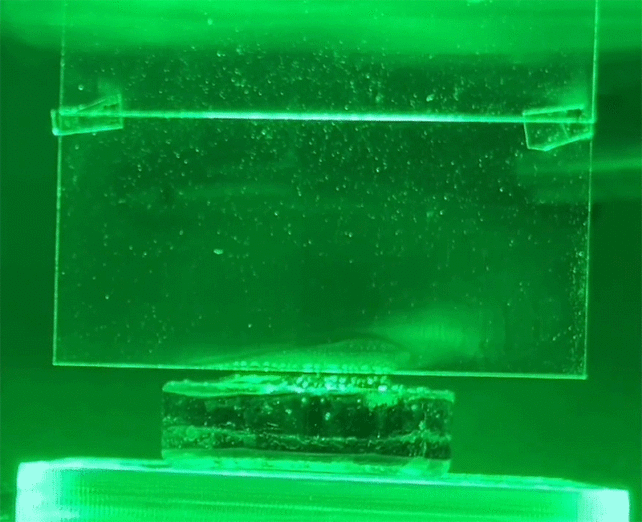The evaporation of liquid water into steam or mist is one of the most well-studied physical processes on Earth.
In an unexpected twist, researchers at the Massachusetts Institute of Technology (MIT) think they have discovered a whole new source of evaporation, and its transformative effect on liquid water could eclipse even that of heat.
Light itself.
The team expects skepticism and pushback, which is why they are already working with other experts to confirm their results and hypotheses.
If they turn out to be right, their discovery will fundamentally change how climate scientists understand the water cycle.
Since Greek antiquity, philosophers and mathematicians have mulled over the curious way that tiny drops of liquid can seemingly drift through the air as the Sun rises.
Later experiments and calculations, using the modern scientific method, revealed heat as a key player in that process.
But high temperatures may not be the only force that can send water molecules scurrying.
Light on its own could also knock the molecular socks off of liquid water, according to new experiments.
The discovery solves a conundrum that mathematicians have faced for the past few years: the evaporation rate of water simply doesn't add up. The amount of heat that water absorbs does not always account for all the liquid that is lost in evaporating experiments.
In one study from 2022, for instance, scientists found they could achieve an evaporation rate 278 percent higher than the thermal limit of liquid water.
The MIT researchers were initially skeptical of this find, but after experimenting themselves they realized some other force must be afoot. Digging further, the team found that the production of light without heat, using a flow of photons, can evaporate liquid water in the lab.
This is a fascinating finding because while liquid water has a knack for absorbing heat energy, it isn't known to absorb much light. That's why you can see the ocean floor from several meters above when there is no silt and lots of sunlight.
The evaporative effect has only been shown in the lab using a hydrogel material, filled with water like a sponge, but the researchers suspect a similar effect could be occurring on the surfaces of the ocean, clouds, or fog.
Their experiments involved shining various colored lights on the hydrogel and then measured how much of its water mass was lost.
The lights were shielded so that they couldn't transmit heat, but even still, researchers watched as puffs of condensation billowed from the material.

For comparison's sake, the team then heated the hydrogel without light using electricity.
The amount of water that evaporated from the heat never exceeded the thermal limit, but when the team turned both the light and heat on, the thermal limit was exceeded.
Researchers at MIT have decided to call the phenomenon the 'photomolecular effect'.
They argue that if light without heat really can trigger evaporation, then desalination processes could harness this knowledge to become three or four times as productive as they are now.
"This could potentially really lead to cheap desalination," says mechanical engineering Gang Chen from MIT.
As with any great foundational shift in science, this one will no doubt face great scrutiny. Other teams are already considering their own attempts to replicate the results.
Meanwhile, the team at MIT has already received several grants to study how the 'photomolecular effect' can be used to improve desalination systems and climate change modeling.
Our understanding of evaporation may never be the same again.
The study was published in PNAS.
